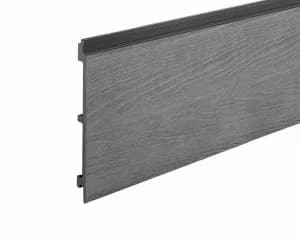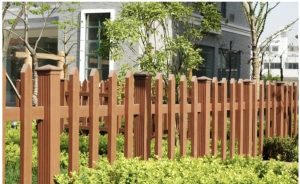Horizontal or vertical composite cladding boards, which is better for your project? Unifloor provides you with composite wall cladding boards for both installation ways.
Introduction to composite cladding
Wood-plastic composite cladding is a versatile and versatile wall covering. A good wall panel project can have many surprising benefits. Unifloor can be designed in a variety of colors and styles to match a wide range of architectural styles.
When considering the installation of wall panels on the exterior of your building, you need to consider the material, style, and installation method of the panels. So, should the wall panels be horizontal or vertical? This article will provide you with information on the two different installation orientations and how to choose the right one for you. We hope it will be helpful to you.
Horizontal or vertical composite cladding boards?
If you have noticed the advantages of wood plastic composite cladding boards, then you need to consider running your cladding horizontally or vertically. It is important to note that the two will present different visual effects but both will perform the function of the cladding board very well.
Horizontal composite cladding boards

Horizontally mounted cladding boards are the most traditional and common type of cladding. If you are looking for a traditional aesthetic, then horizontal cladding is for you. This type of installation is more common and relatively simple, so it tends to cost less to install than vertical installations. It is a budget-friendly installation project.
Many people will be concerned about the ability of horizontally mounted wall panels to withstand the elements. In fact, the ability of a wall panel to withstand the elements has little to do with how it is installed; it depends on the type of material the panel is made of and whether it is installed correctly. If the cladding is not installed correctly, the cladding is susceptible to problems such as mold and warping.
Vertical composite cladding boards

Vertically mounted cladding boards can visually elongate a building. This type of installation is common in log cabins and old barns. It can create a unique visual effect.
Another advantage here is that the vertical cladding boards are installed in the same direction as the rainfall, so you don’t have to worry about rainwater accumulation, which of course is not a problem with properly installed horizontal cladding boards.
Presentation Style
Horizontal wall panels are a more traditional style, while vertical composite cladding boards are a more contemporary decorative style. Also, the different widths of the wall panels will have different effects. Narrower wall panels look more modern, while wider wall panels are more traditional.
Installation Difficulty
Unlike wall panels of other materials, wood-plastic composite wall panels have a unique installation system that connects and secures the wall panels with hidden fasteners. It can avoid the aesthetic impact of nails on the surface.
From the implementation steps of the installation, vertical wall panels are more difficult than horizontal wall panels. Professional installers are usually required for installation.
What can Unifloor bring to you?
Unifloor is a leading composite cladding manufacturer and supplier in China. Unifloor offers a wide range of wood plastic composite wall panels in different designs. They are available for vertical installation and for both types of installation.
Other points to note
Cladding for horizontal use must be chamfered on the top edge to prevent water sitting. Remember the expansion space between two cladding boards no matter which method you will take.
Conclusion
Which installation direction is better for you? When considering how to install wall panels, you also need to consider the shape of the building. If the elevator is short and wide, then horizontal boards are recommended. For a tall, thin elevator, then vertical composite cladding boards are recommended. You can also consider a mix of both types of installation to create a unique look for your building.












